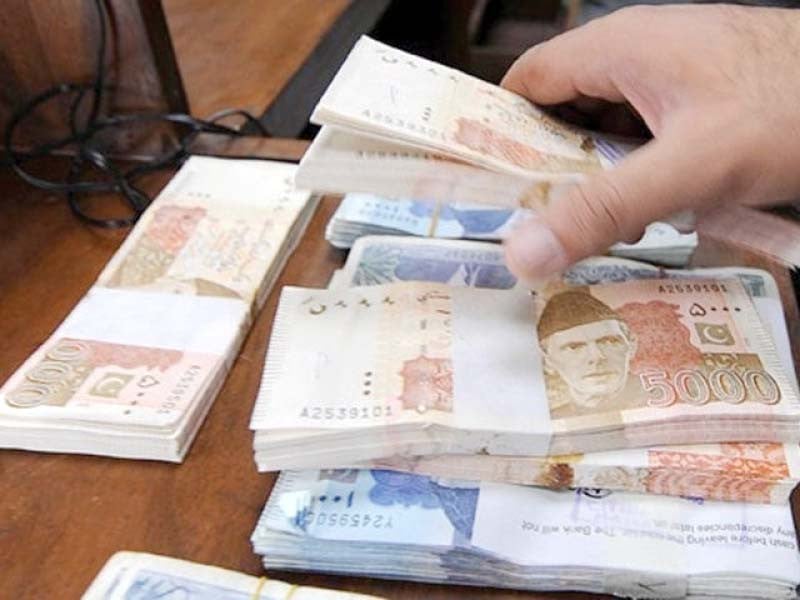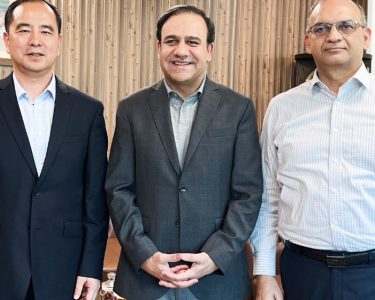In the midst of various crises, the Pakistani government finds itself immersed in the task of planning the budget. Given the prevailing situation, this is an immense undertaking. The government faces the challenge of coming up with innovative ideas to manage scarce resources while sustaining the pressure imposed by international financial institutions such as the International Monetary Fund (IMF) and the World Bank. It is common knowledge that the IMF, in particular, is exerting significant pressure on the government. Adding to the complexity, the government is also grappling with the management of a debt crisis that has shaken the economic and social fabric of the country.
Exploring an Alternative Counter-Cyclical Budgeting Strategy
IMF’s Demands and Political Instability Complicate the Situation
Despite the considerable depreciation of the Pakistani rupee, sluggish economic growth, and rampant inflation, the IMF continues to demand more from Pakistan. The ongoing political instability further complicates the situation, and the upcoming election forces the government to provide an excessive number of subsidies.
Limited Choices for the Government
Consequently, the government finds itself with limited options. Pakistan must now decide whether to adhere to the IMF’s stringent monetary and fiscal policies, austerity measures, and allow inflation to persist, or break the cycle by adopting a different approach. In light of this backdrop, several suggestions merit consideration.
Exploring Indigenous Knowledge Instead of Relying on the IMF
First and foremost, Pakistan should strive to avoid dependence on the IMF and leverage indigenous knowledge. An analysis of historical data reveals that no country has achieved substantial growth under the guidance of the IMF. On the contrary, countries that followed the IMF’s advice often experienced deep crises, as evidenced by Argentina, Brazil, and Mexico, among others. Argentina serves as a classic example.
READ MORE: Federal Government Approves Sale of Indus Delta Mangrove Carbon Credits to International Market
Argentina’s Struggle with IMF Guidance
Argentina has made numerous efforts to appease the IMF over the decades. Initially, Argentina resorted to selling its assets in an attempt to repay loans and stimulate growth. Unfortunately, these measures proved ineffective and resulted in a double-edged problem. On one hand, Argentina lost productive assets, and on the other hand, the debt burden continued to increase.
The implementation of the latest IMF programs, amounting to $50 billion, has further complicated the situation. Inflation has now crossed the 100% mark in Argentina. Therefore, Pakistan should strive to avoid succumbing to the will of the IMF and instead explore alternative means to fulfill its national agenda.
Moving Away from Austerity and Rigid Policies
Secondly, Pakistan should distance itself from the mindset of austerity, which often excludes the privileges enjoyed by bureaucrats, politicians, and institutions, and from rigid monetary and fiscal policies. These measures will not aid in breaking the cycle of stagflation and setting the economy on a growth trajectory.
Consequences of IMF Advice and Rigid Policies
The impact of the IMF’s advice, combined with austerity measures and rigid monetary and fiscal policies, is already evident. They have wreaked havoc on the economy, leading to a shrinking GDP estimated at 0.8%, negative growth in large-scale manufacturing, and meager 0.9% growth in the services sector.
Adopting a Counter-Cyclic Approach with State-Owned Enterprises (SOEs) and CPEC
Therefore, it is advisable for the upcoming budget to be prepared with a focus on a counter-cyclic approach. Thankfully, Pakistan has two exceptional options at its disposal: state-owned enterprises (SOEs) and the China-Pakistan Economic Corridor (CPEC). These avenues can help implement a counter-cyclic approach and break free from the trap of stagflation.
Unlocking the Potential of State-Owned Enterprises (SOEs)
Contrary to prevailing notions in Pakistan, SOEs hold the potential to provide immediate relief and establish sustainable channels for non-tax revenue. Unfortunately, SOEs are often perceived as detrimental to the country’s development. Liberal economists and experts have consistently urged successive governments to privatize SOEs, arguing that they hinder the country’s progress. They cite the poor state of affairs within these enterprises as an excuse for privatization, successfully persuading ruling elites about the supposed benefits of such a move. However, they fail to tell the real story behind the sorry state of SOEs.
Mismanagement and Exploitation of SOEs by Ruling Elites
Successive governments have misused and abused SOEs, neglecting economic rationality in their management. Instead, these enterprises have been utilized for political gain and to favor political allies. Cronies and supporters have been appointed to key positions within SOEs, disregarding merit and national interest. Consequently, enterprises such as Pakistan International Airlines (PIA), Pakistan Steel Mills, and Pakistan Railways are plagued by excessive staffing and mismanagement. In essence, the ruling elite exploits SOEs mercilessly, showing little concern for the country’s best interests.
Addressing the Real Problem: Management and Governance
From the preceding discussion, it becomes apparent that the real problem lies in the realm of management and governance, rather than with SOEs themselves. Hence, the government must focus on improving the management and governance of SOEs. Privatization is an ill-advised strategy that will result in the loss of valuable assets without any tangible gains, as evident from the example of Argentina discussed earlier. Pakistan is likely to face a similar fate if it pursues privatization.
Learning from China’s Approach to SOEs
If the objective is to transform SOEs into profitable businesses, Pakistan should look to China for inspiration. China’s approach to running SOEs has been based on economic rationality, rather than favoritism or cronyism. Merit is highly regarded, and individuals best suited for the job are selected. By following China’s example, Pakistan can benefit significantly from its SOEs.
Leveraging Existing Infrastructure and Creating Opportunities
Moreover, SOEs present an advantageous option as the infrastructure required for their operations is already in place, eliminating the need for substantial initial investments. All that is required is the improvement of governance and management within these enterprises.
SOEs as Job Creators and Revenue Sources
Additionally, SOEs not only create job opportunities for the local population but also serve as a source of direct earnings for the government. Non-tax revenue is essential for governments to address the increasing needs of the people. Furthermore, the China-Pakistan Economic Corridor (CPEC) represents another viable option for Pakistan to implement a counter-cyclic approach. Three elements of CPEC can be particularly beneficial in the short run.
Agricultural Cooperation: Low-Hanging Fruit
Firstly, Pakistan stands to benefit from agricultural cooperation, which represents an easily attainable opportunity.
Special Economic Zones (SEZs): Catalyzing Growth
Secondly, the construction of Special Economic Zones (SEZs) has the potential to stimulate rapid growth, generate employment, and create economic opportunities.
ML-1 Implementation: Unlocking Multiple Opportunities
Thirdly, the implementation of ML-1 (Main Line 1) can bring about numerous opportunities for development.
Long-Term Benefits of Industrialization and Technological Cooperation
In the long run, industrialization, modernization of agriculture, and cooperation in science and technology can propel Pakistan towards sustainable development. However, in order to reap the benefits of these opportunities, Pakistan must first put its own affairs in order. Consequently, the upcoming budget should not be tailored to cater solely to the upcoming election. Instead, it should be devised with a focus on the country’s long-term goals.
Strategic Budget Allocation for Economic Growth
Therefore, the government should avoid providing counterproductive subsidies or implementing social protection programs without economic relevance. Maximum resources should be allocated to sectors that can stimulate economic growth and development, such as SOEs, CPEC projects, and agriculture. Social protection programs and subsidies should be directly tied to economic activities, such as providing subsidies to small farmers.
Focusing on Livelihood Opportunities and Tough Decision-Making
Furthermore, the government must prioritize the creation of livelihood opportunities rather than offering free handouts like cash transfers. Cash transfers should only be reserved for individuals who are unable to work, such as the elderly, children, or disabled individuals. Ultimately, it is imperative for the government to make difficult decisions and take decisive actions to navigate through challenging circumstances. Failure to do so will result in increasingly tough situations that need to be addressed in the future.




